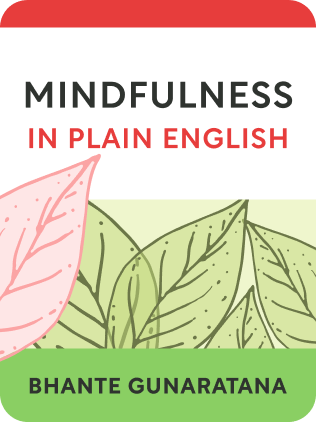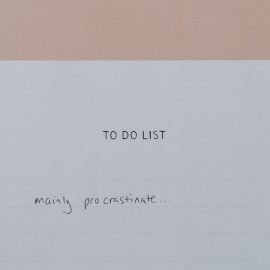

This article is an excerpt from the Shortform book guide to "Mindfulness in Plain English" by Bhante Gunaratana. Shortform has the world's best summaries and analyses of books you should be reading.
Like this article? Sign up for a free trial here .
Do you want to start a regular meditation practice? What are some tips that can help you get started?
If you are serious about starting a regular meditation practice, it’s best to set up a structure. If you create a routine that is feasible for you to follow consistently, you are more likely to stick with it and reap significant benefits.
Below are some guidelines that can help you structure your meditation practice and overcome the common hurdles.
Beginning a Meditation Practice
Meditation requires continuous practice, and so it benefits from structure.
When to Sit
Establish a formal meditation practice schedule. Set aside a certain time.
- Meditating in the morning is a good start to the day. Wake up fully, then sit down to meditate. Don’t get hung up in the day’s activities.
- Evening before sleep is another good time. It clears your mind of mental rubbish throughout the day.
Once a day is enough when you begin.
Don’t overdo it so you feel like it’s a chore, or so you expect magical results when you apply it too intensely. The best is when you look forward to sitting.
How Long to Sit
Start with 20-30 minutes for sitting.
Choose the length before sitting, and stick to it. Don’t peek at your watch during it, just let the sitting come to a close.
After a year, you should be able to sit for an hour at a time. Seasoned meditators practice 3-4 hours a day.
Don’t force yourself to sit with pain just to feel all tough and mighty. This isn’t an endurance contest.
Where to Sit
It’s easier to concentrate in areas without distractions, hence why Buddhist monks go to meditation halls free of the other gender, noise, and daily concerns like food.
Example distractions are sounds, sensations, emotions, fantasy. Emotions include desire, aversion, self-condemnation, agitation, doubt.
For all distractions that arise, the general approach is to observe it mindfully without getting engaged. Watch the distraction form and dissipate. Notice its intensity and how it affects the body. Notice how long it lasts. Don’t help or hinder the thought. The distraction will naturally dissipate.
The ideal you’re going for is to experience each mental state fully, adding nothing to it nor missing a part of it. Example: with pain, there is a pure, flowing sensation. You don’t reject it, attach words to it, or think about it. You don’t picture a colored diagram of the leg with lightning bolts shooting at where it hurts. Instead, you simply become aware of it and watch it come and go.
Thoughts are often verbalized as “I have a pain in my leg.” You add the “I” to the experience, identifying with the pain. Leave “I” out of it – then pain is not painful, it’s simply a surging energy flow.
Don’t force the distraction away. Switch your attention to it briefly. It will eventually go away. “Fight with them and they gain strength. Watch them with detachment and they wither.”
Ponder these things wordlessly. While at first you’ll need to ask your questions in words, soon you will do it by second nature and then return to the breath. It’s a nonconceptual process.
Do not condemn yourself for having distractions that detract from mindfulness. Mindfulness requires a target of focus, and distractions are a secondary object of attention taking you away from breathing. Distractions are an exercise to get through, much like a hurdle in a race. They are the very object of practice.
Trickiest of all is positive mental states – happiness, peace, compassion. Depriving yourself of this makes you feel like a traitor to humanity. But treat them like any other mental state – don’t become attached. Observe them for what they are, and watch them come and go.
If multiple sensations arise at once, then focus on the strongest one, let it fade away, then return to your breathing.
Common Obstacles
Sometimes your meditation will feel like hitting a brick wall. These are opportunities to develop your meditation practice. Instead of running away, you confront the problem head-on, examining it to oblivion. If you can deal with issues that arise in meditation, it will carry over to the rest of your life.
Buddhist philosophy: “pain is inevitable. Suffering is not.” Bad things happen to everyone. How you deal with it and interpret it determines how you are affected emotionally by bad things.
For all problems that arise, the general approach is to observe it mindfully without getting engaged. Watch the problem form, peak, and dissipate. Notice its intensity and how it affects the body. The problem will naturally dissipate. And you will find that many of our day-to-day emotions are simply superficial mental states that have no control over you.
The common problems that arise:
Physical pain
- Get rid of physical pain before meditating (eg medicine for a headache).
- Wear loose clothing and relax your posture. Keep your arms and neck muscles relaxed.
- If pain remains, make the pain the object of your meditation. Explore the feeling.
- You will observe there are two things – the pain itself, and your resistance to that pain. This is a barrier between “me” and “the pain.”
- You will feel the physical resistance to the pain through muscle contraction. Relax those muscles one by one.
- Mentally, you will find a “I don’t like this feeling” sentiment. Locate this and relax it too.
- Once this barrier has vanished, you will find yourself merging with the pain. At this point, it no longer hurts – suffering is gone.
- Don’t make the mistake of finding it hard to be mindful when you feel pain. In fact, mindfulness never exists by itself – it always has some object.
- These techniques will carry over into the rest of life, including anxiety and sadness.
Drowsiness
- Apply your mindfulness to the state of drowsiness itself. This awareness will evaporate drowsiness.
- Try to eat lightly before meditating or wait after a big meal.
- If you need to sleep, then sleep. You will not gain any new insight from fighting sleep.
Distraction
- If you have irritating tasks or problems that keep coming up, solve them first before meditating. But don’t use this as an excuse to not meditate, thinking all your problems need to be solved.
- If you don’t know what you’re agitated about, observe it, and the cause will eventually surface.
Stupor
- By deepening concentration, you can enter a state where you feel pleasantly divorced from the body. If you dive into the pleasure too much, your mind will stop being mindful, attention scattering aimlessly through vague clouds of bliss.
- Mindfully observe this and it will dissipate.
Miscellaneous
- Legs going to sleep – don’t worry about legs going to sleep. It’s just nerves pinching, not lack of blood circulation. Numbness will disappear as you practice.
- Boredom – mindfulness looks at everything with the wondrous eyes of a child. If you’re bored, look again.
- Fear – scary thoughts or memories may arise. Just observe it wash over you. These are just thoughts and can’t hurt you.
- Discouragement, trying too hard – drop your expectations. Don’t punish yourself for being unmindful, for realizing you’ve been unmindful is itself mindfulness.

———End of Preview———
Like what you just read? Read the rest of the world's best book summary and analysis of Bhante Gunaratana's "Mindfulness in Plain English" at Shortform .
Here's what you'll find in our full Mindfulness in Plain English summary :
- How to practice mindfulness daily
- How to recognize emotions as they arise
- Why you have to let go of emotions for peace






